Communication Systems Class 12 Notes

Class 12 Physics Chapter 15 Communication Systems Notes – PDF Download
Chapter 15 Communication Systems
Chapter 15 of NCERT Class 12 Physics covers various aspects of communication systems. In this chapter, students learn how a set of systems used to connect, transmit, interconnect, and communicate act as a means of communication. Students will learn a lot about this chapter by accessing the Vidyakul NCERT notes based on the latest curriculum.
Vidyakul provides over 100 exercises across all chapters of Physics from multiple books to help students analyze their progress before exams. Visit Vidyakul to discover exciting new chapter concepts.
CBSE CLASS 12th PHYSICS 15 NOTES
Points to Remember
Below we have provided some of the important points related to Communication systems to help students with their studies:
Communication systems are simply a collection of systems/technologies to transmit information in the form of electrical signals or electromagnetic waves.
These systems are categorically arranged into three different types on the basis of their uses – media, technology, and application area.
Sensors, transducers, emitters, and amplifiers are examples of modern technology used as components in most modern communication devices.
Electronic communication is the faithful transformation of a message or information that can be available in the form of an electrical current or voltage travelling from one point to another.
Every message signal is made up of different frequency ranges that are critical for the signal’s optimal transmission of information.
Any practical communication supports a few frequency ranges.
Low-frequency signals cannot travel long distances and must be superimposed with a high-frequency carrier signal to flow smoothly.
Topics and Sub-topics
In Class 12, Physics Chapter 15, students study Earth's atmosphere and how electromagnetic waves propagate, and how amplitudes and frequencies are modulated and demodulated for proper communication. Year 12 students can learn about this chapter through Vidyakul's various 3D educational videos to enhance their learning skills.
The table below lists the important topics of this chapter.
Download this solution for FREE Download This PDF
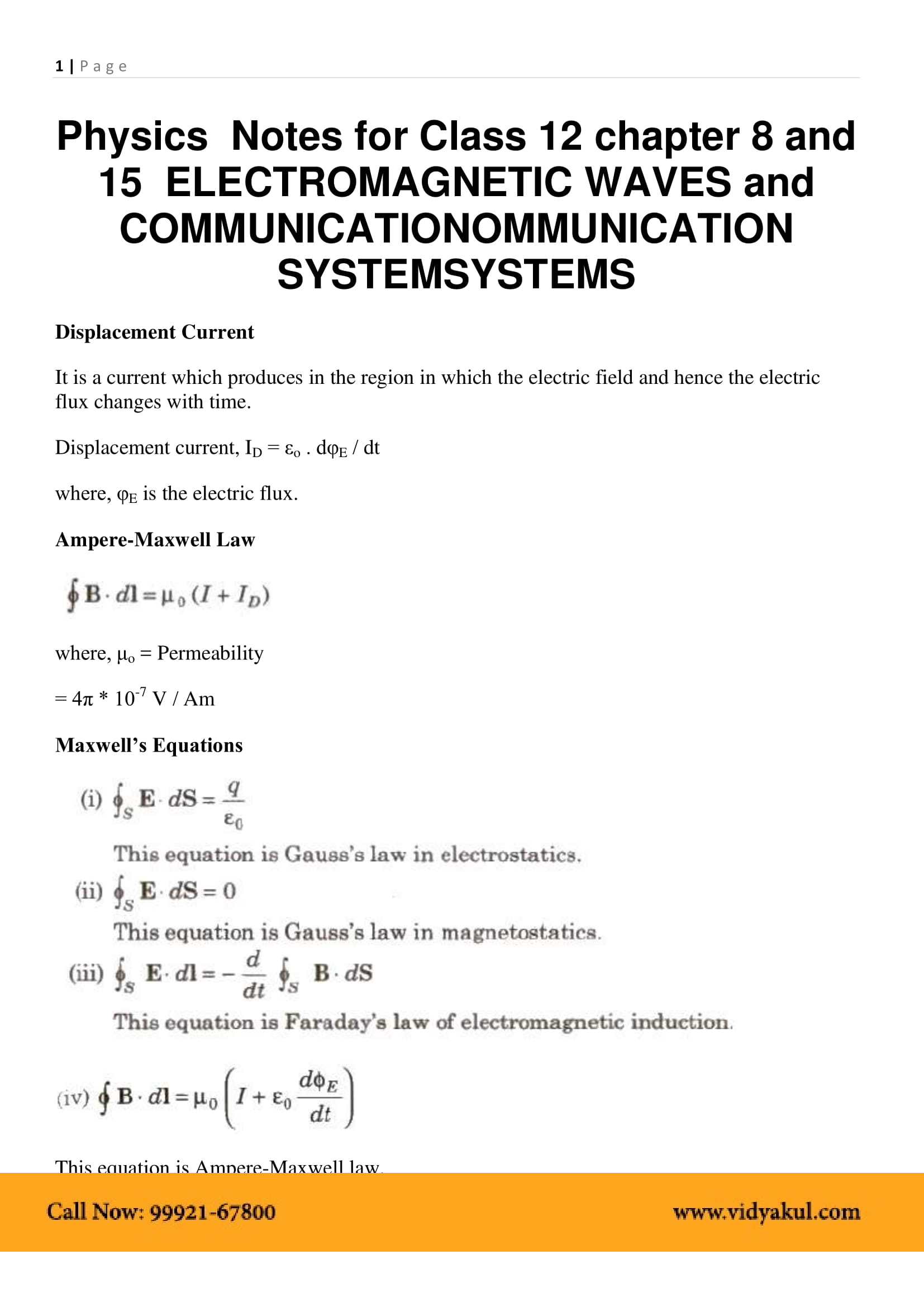

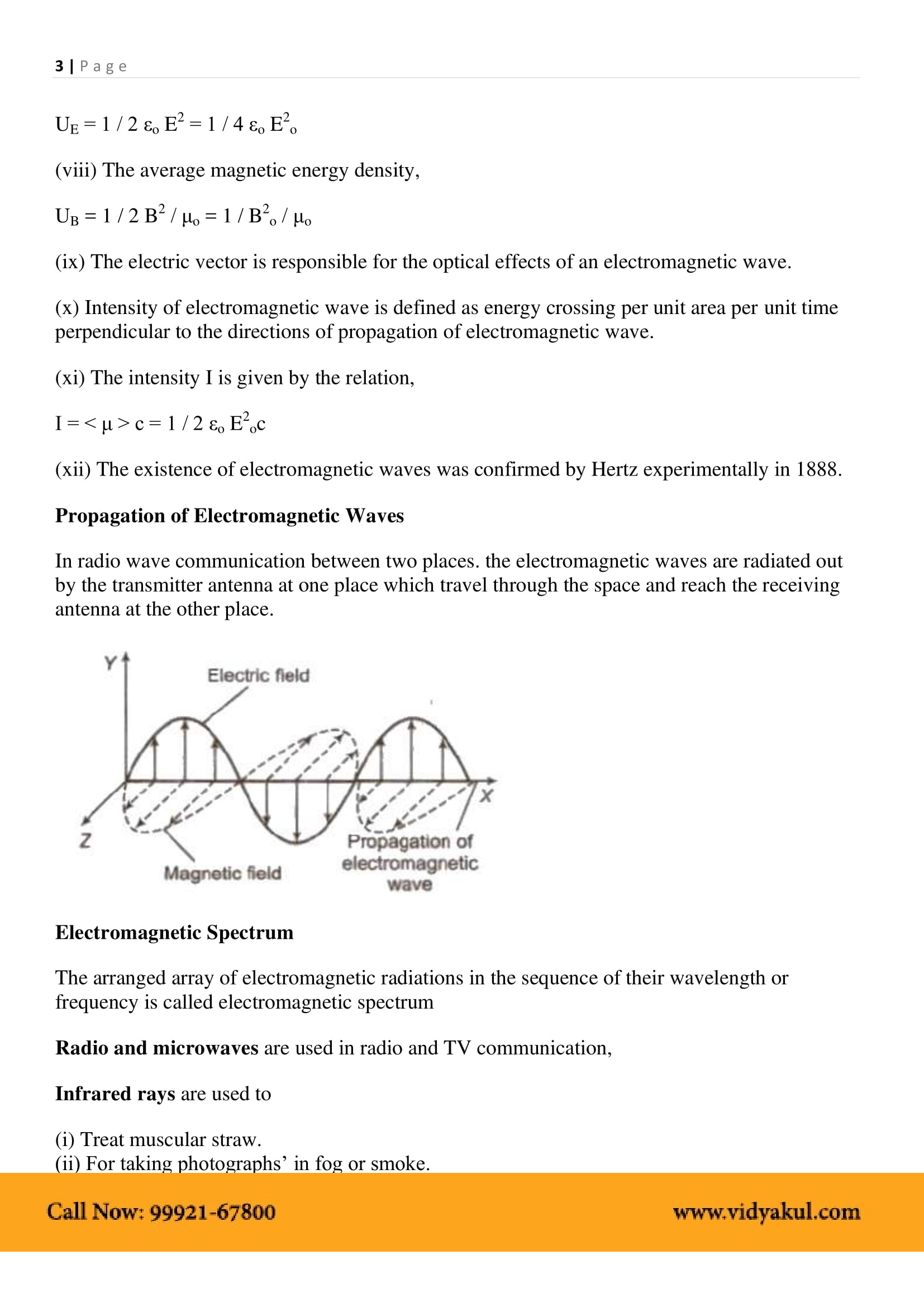
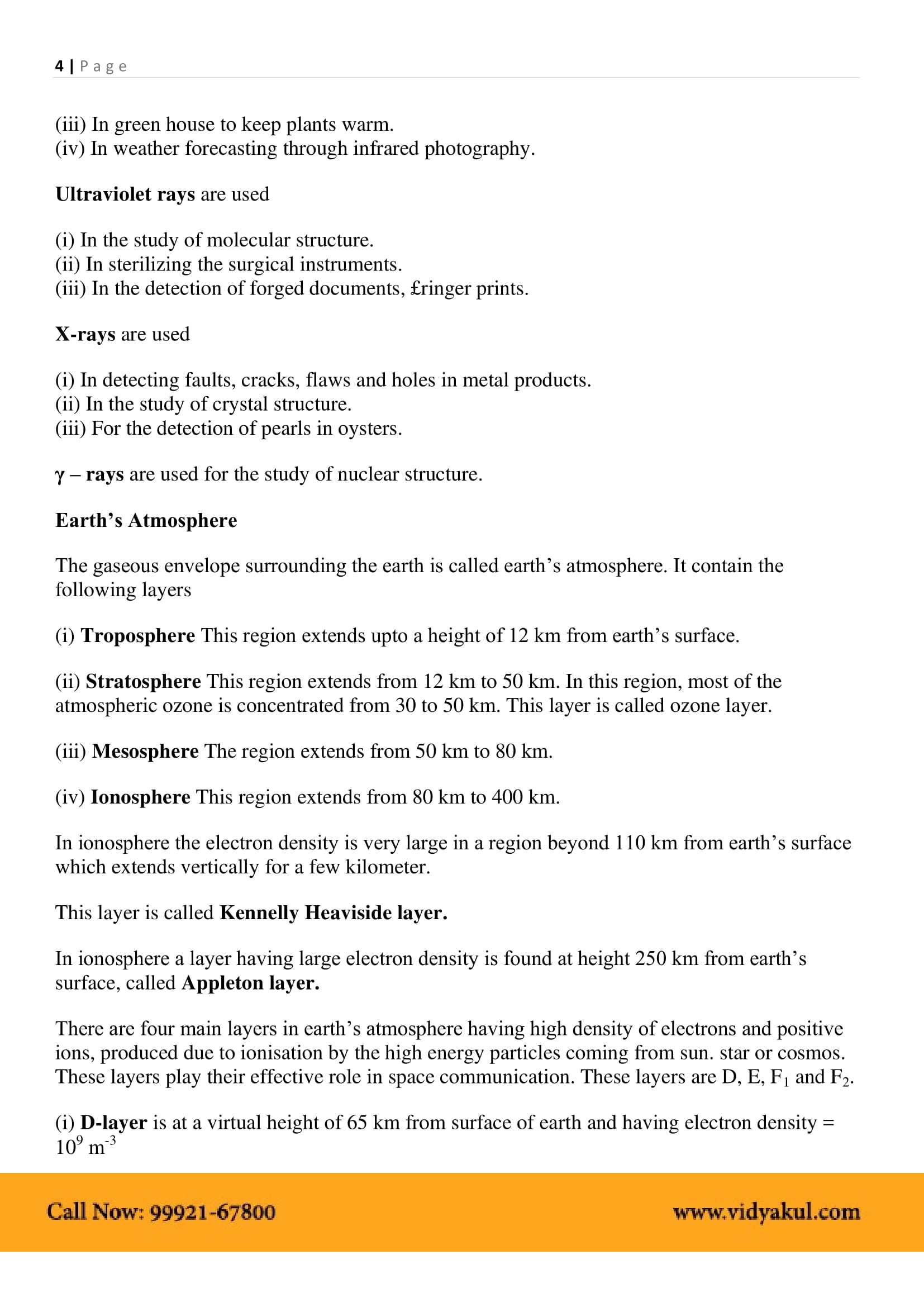
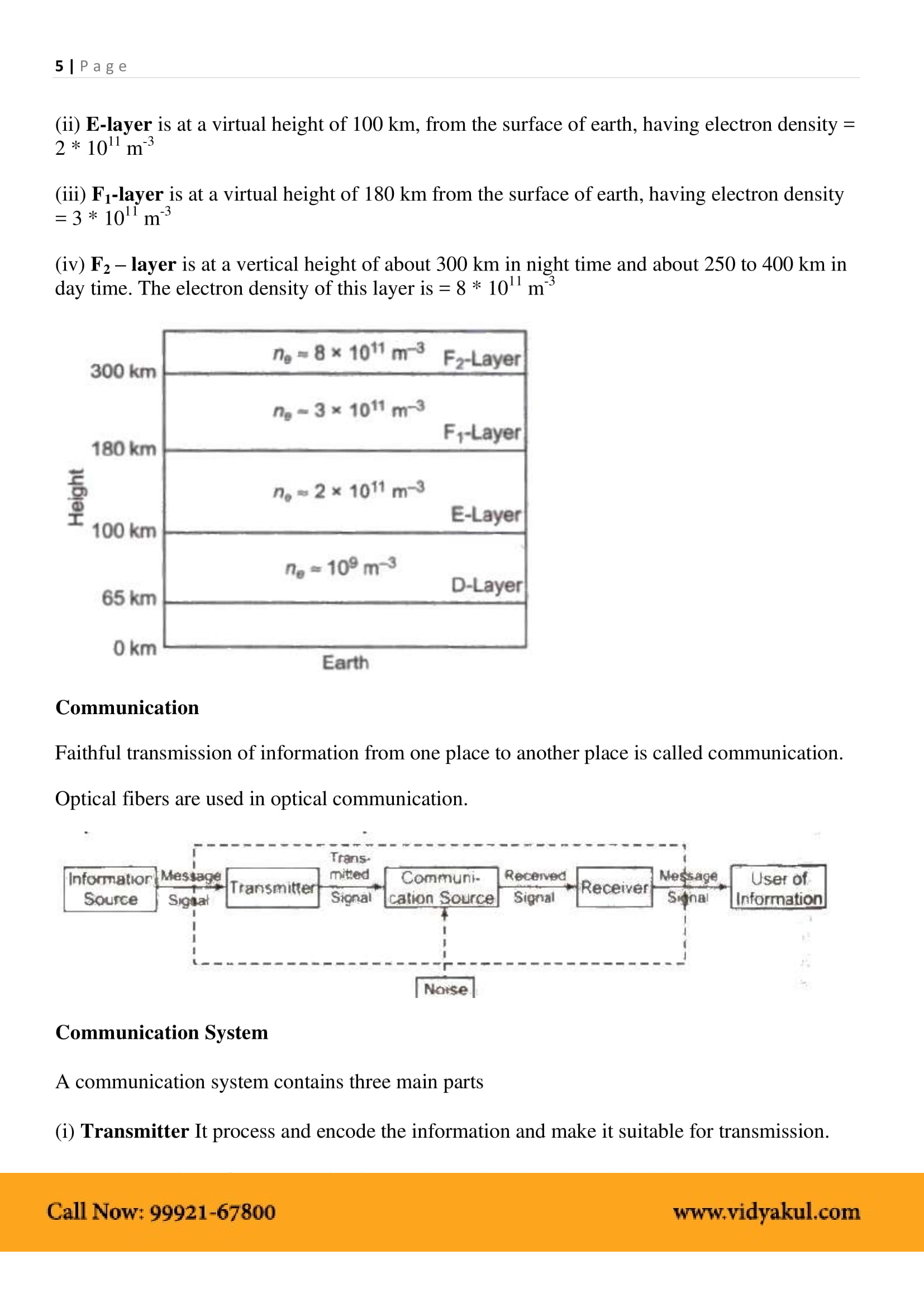
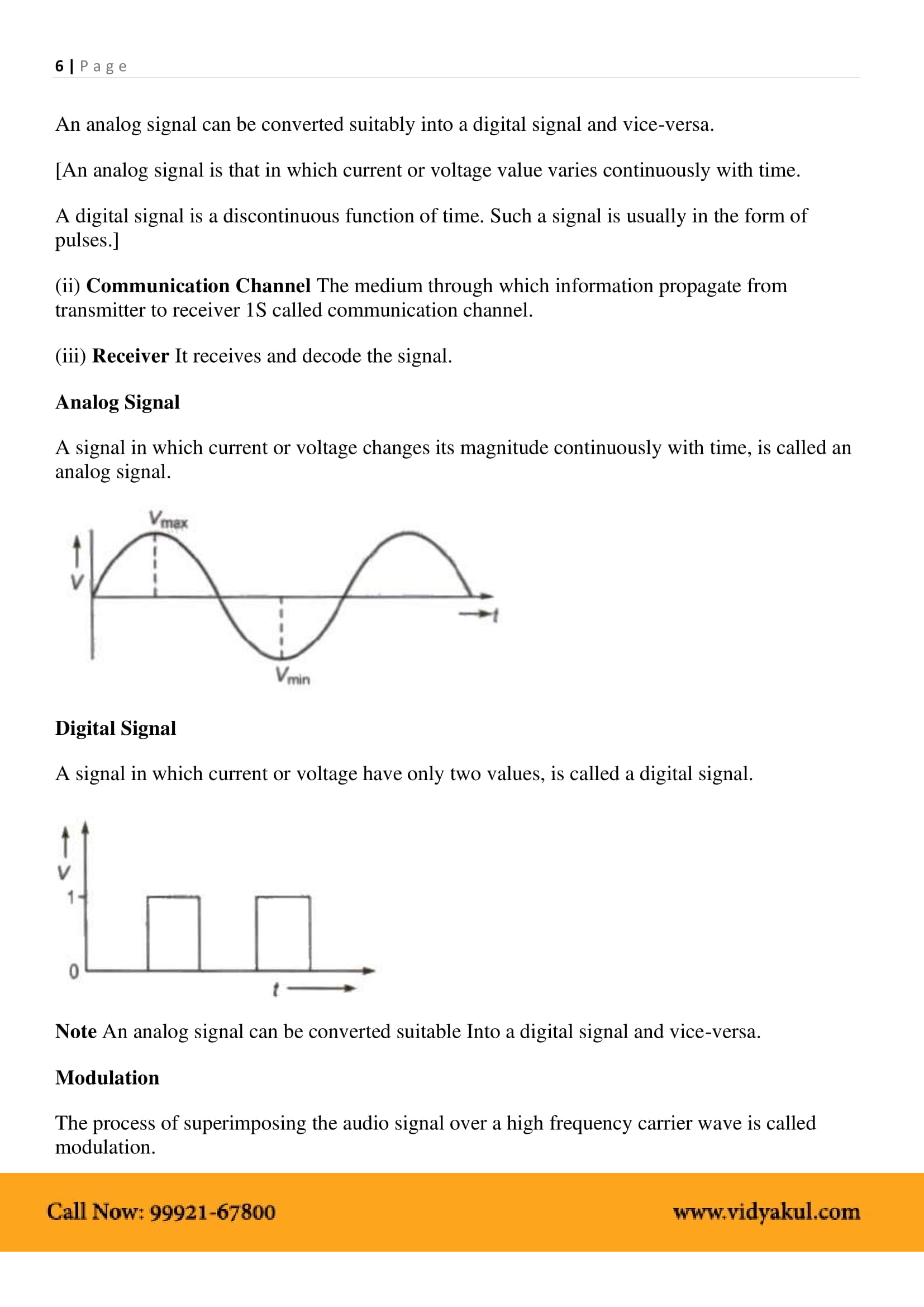
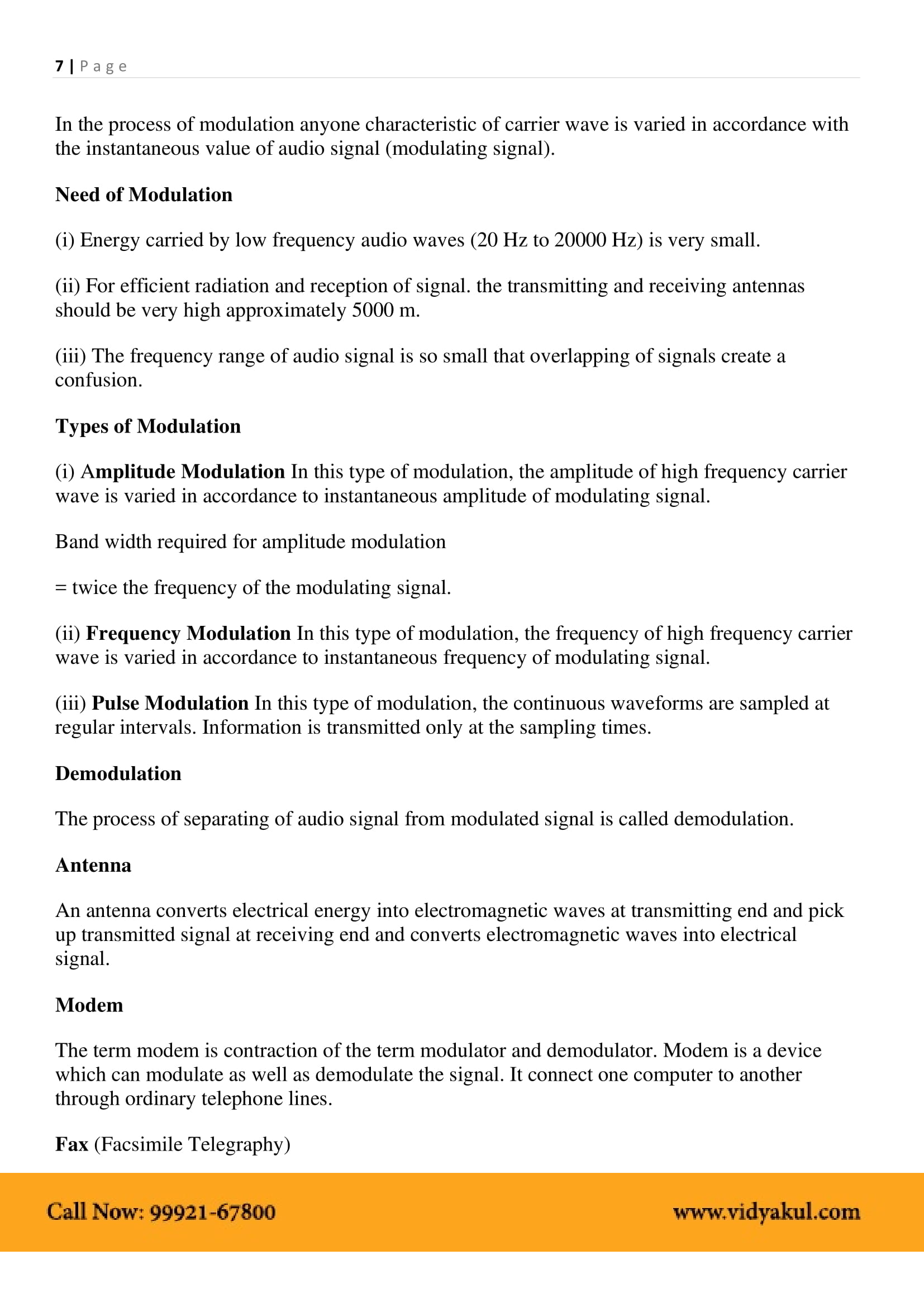
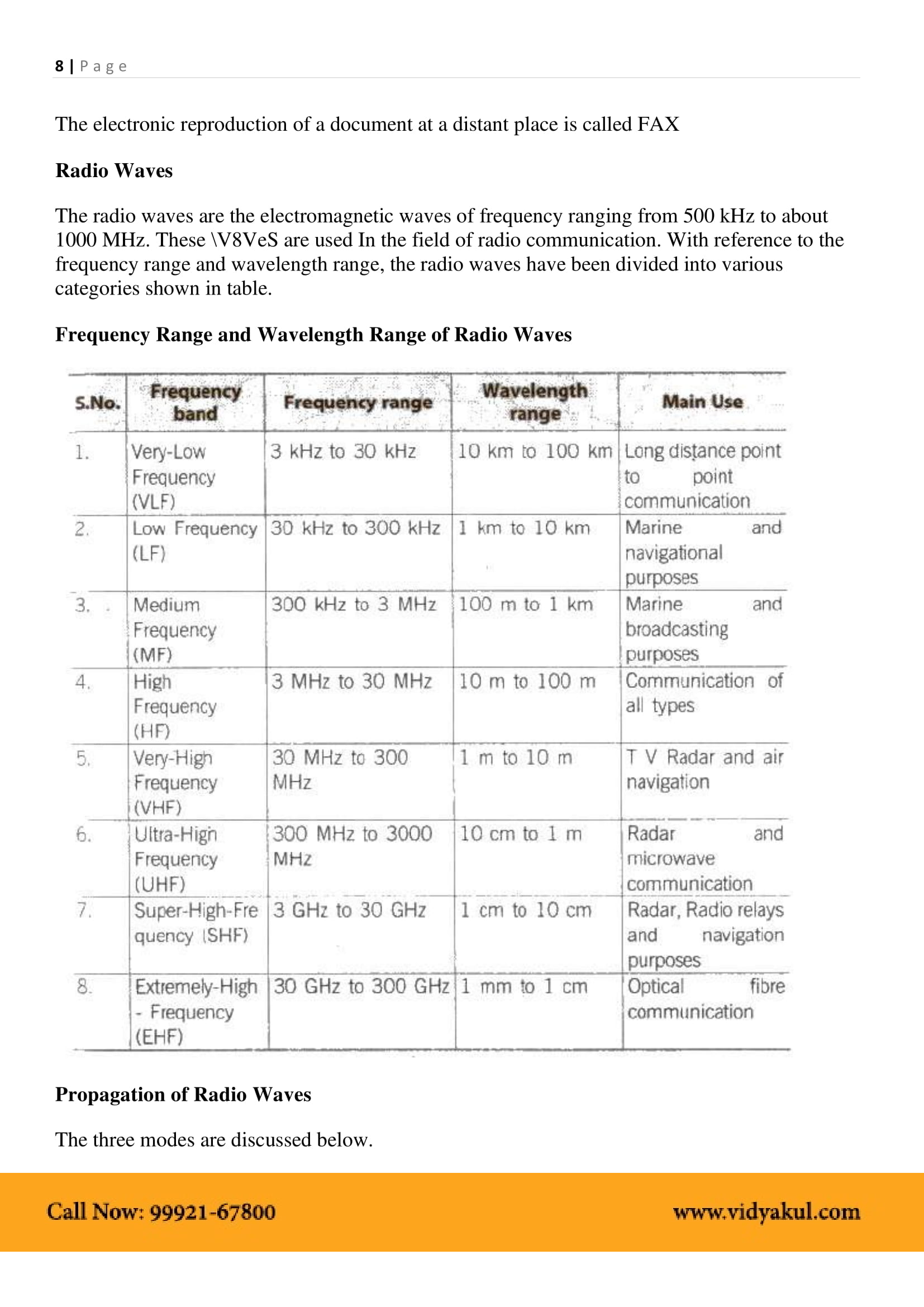



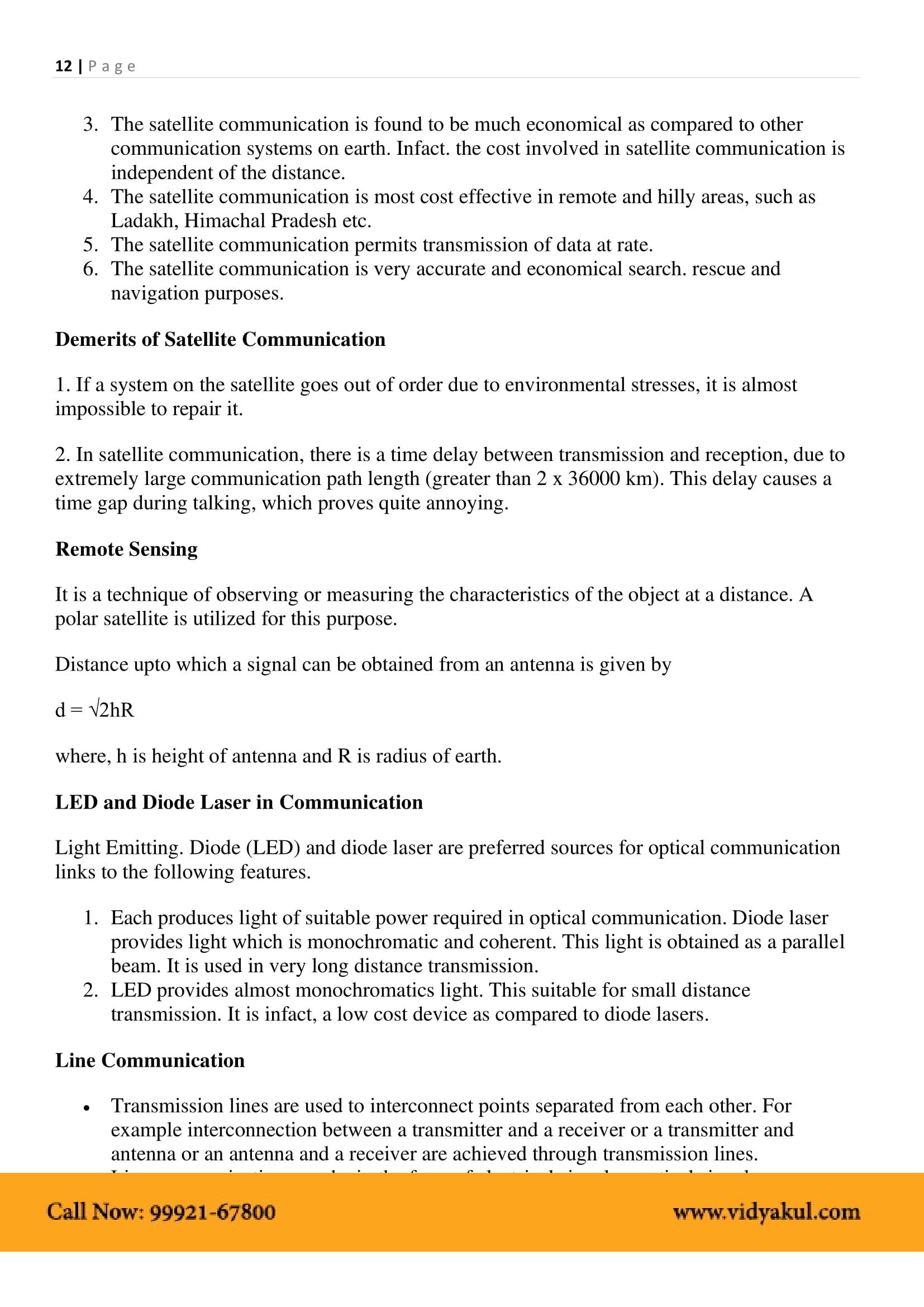
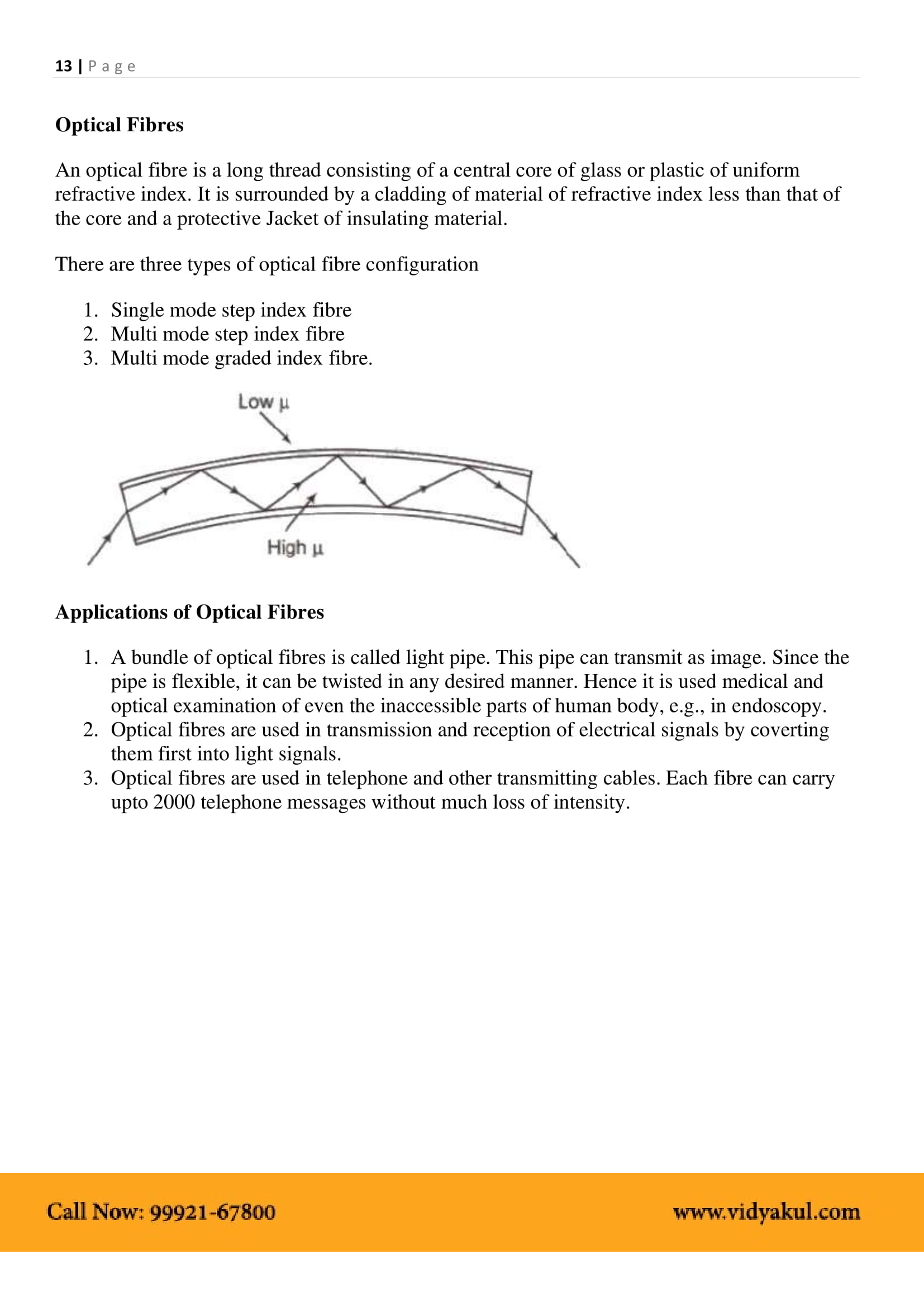
Important Links:
Few Important Questions
What is ‘Electronic communication’?
Electronic communication is any form of communication that’s broadcast, transmitted, stored or viewed using electronic media, such as computers, phones, email and video.
What is a ‘Trasmission channel’?
A path between two nodes in a network. It may refer to the physical cable, the signal transmitted within the cable or to a subchannel within a carrier frequency.
What is an ‘Analog signal’?
An analog signal is a continuous signal in which one time-varying quantity represents another time-based variable.
What are some general communication systems discussed in Class 12 Physics Chapter 15?
E-mail, internet, television, radio, computer, etc., are some prominent communication systems discussed in Class 12 Physics Chapter 15.
Practice Questions
1. The maximum amplitude and minimum amplitude for an amplitude modulated wave is found to be 20V and 2V respectively. Determine the modulation index, µ and find out the value of µ if the minimum amplitude is zero volt?
2. In order to have a modulation index of 85%, what should be the peak voltage of the modulating signal if the carrier wave has a peak voltage 15V is used to transmit a message signal?



